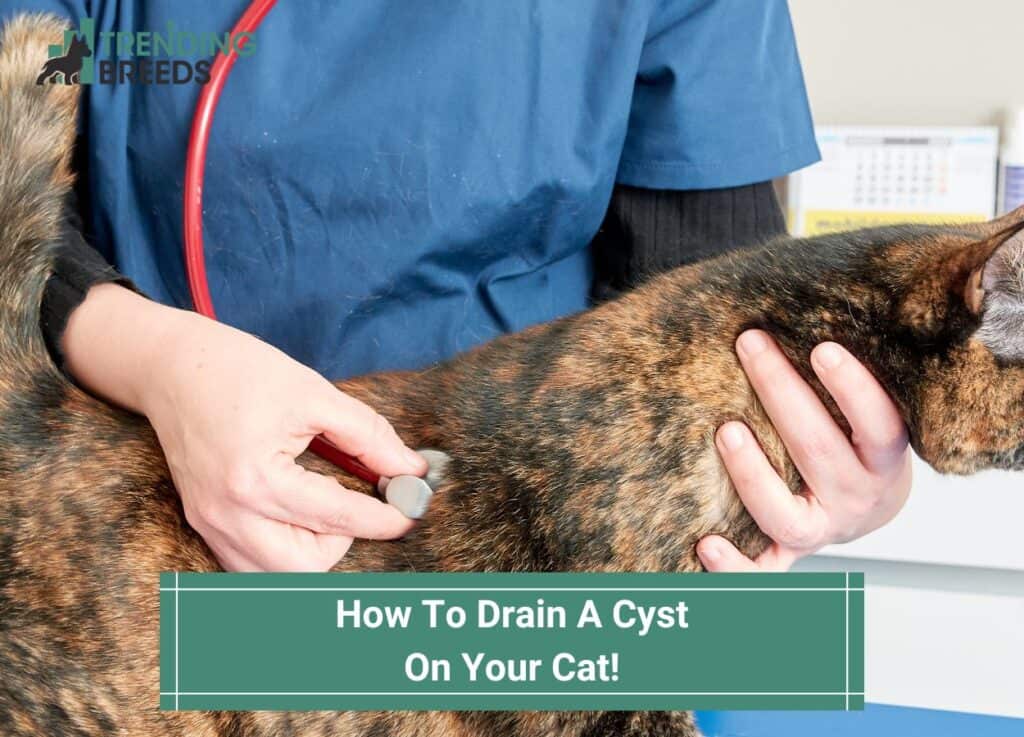
One of the best advantages of having a cat as a pet is cuddling and patting it. It might be a great opportunity to learn more about your cat and a time to strengthen your relationship. You don’t want your cat to suffer from lumps and bumps. If your cat has a painful cyst, you might wonder how to drain a cyst on your cat.
To drain a cyst on your cat, a surgical incision is made to drain a cyst openly, after which a small surgical rubber tubing is inserted into the site, sutured, and left in place to allow fluid to flow continuously over time.
Keep reading below for more information.
Before you scroll further down this guide, check out these other cat-related articles: Do Cats Scratch Leather? and Best Home Remedies For Vomiting Cat.
Table of Contents
What is a Cyst?
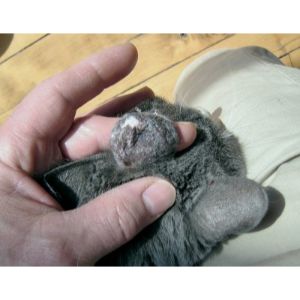
A cyst is a tiny, non-cancerous skin development that resembles a pimple. Cats can develop a variety of cysts. Sebaceous cysts are the most typical type of cyst discovered in cats.
Sebaceous cysts develop when dirt, debris, or oil gets lodged in your cat’s hair follicles.
In most cases, sebaceous cysts are harmless. They can occasionally get depleted or even vanish without treatment. Nonetheless, cysts should never be ignored and should be evaluated by a vet immediately.
Sebaceous cysts can develop into squamous cell carcinoma (a form of skin cancer) or get infected when left unchecked.
The most prevalent kind of skin cancer in cats is squamous cell carcinoma. It develops after a cat has been exposed to UV rays (aka the sun) for a while.
Watch out for cysts that change or enlarge over time. Cysts that grow or change quickly may be malignant.
Your veterinarian has to look at sebaceous cysts right away if they exhibit any of the following traits:
- Red
- Irritated
- Bloody
- Oozing
Different Cat Lumps and Bumps

Cats may develop benign or malignant tumors. Tumors that do not metastasize or spread to other body parts are referred to as benign masses.
Typically, benign masses are non-invasive, whereas malignant (or cancerous) tumors can assault nearby tissue or metastasize.
To ensure that your cat lives as long and as comfortably as possible, malignant tumors must be identified and treated as soon as possible and as appropriate.
Contact your veterinarian if you are worried about unusual skin lumps on your cat so they can perform a complete physical examination and diagnostic procedures.
Some tumors are benign and don’t necessarily need treatment. The following are some typical causes of benign tumors in cats:
Trauma
Lumps or solid bruises may develop when a cat bumps a body part. Often, these bumps disappear in under a week.
Bites From Insects or Parasites

They typically manifest as red, elevated regions and itch or irritate the skin. Fleas or a tick that feeds on human skin can be in the area.
Ant bites and spider bites resemble flea and tick bites in appearance. These red pimples typically disappear in a few days but can worry pet owners.
Allergic Reaction/Anaphylaxis
Some environmental irritants, such as foods or insect bites, can result in hives, which are itchy spots that can be flattened, elevated, or occasionally inflamed.
Although some malignant tumors, most notably mast cell tumors, might trigger this response in the body, it is typically a benign process.
Skin Tags

These benign skin growths can appear anywhere on the body and are overgrowths of skin cells.
They are typically tiny and do not affect the cat at all. They don’t develop quickly, and they often don’t change color unless they are agitated.
Abscesses
A walled-off infection within tissue is referred to as an abscess. The infected fluid (or pus) cannot drain because the infection grows beneath a healed wound.
Abscesses can appear anywhere on a cat’s body and are frequently connected to puncture wounds like animal bites or scratches. Due to fights, outdoor cats tend to exhibit them most frequently.
The puncture holes are typically small and concealed by the fur, and an abscess typically begins to build with little to no clinical indications.
They eventually begin to enlarge, turn warm, and become uncomfortable.
Abscesses in cats can result in fevers, discomfort, and lethargy if left untreated. These lumps can sometimes head, explode, leak pus, and, occasionally, blood.
A veterinarian should handle abscess treatment. The abscess will likely be surgically drained, the region will be carefully cleaned, and antibiotics, painkillers, and anti-inflammatory drugs will likely be prescribed.
Cysts
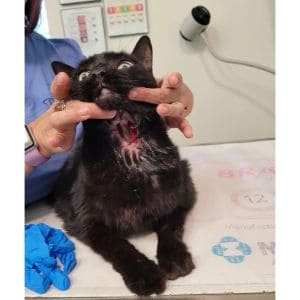
These harmless growths frequently contain fluid or more substantial, non-infected material.
They might be round, oval, firm, or soft and are typically elevated. Cells that release material or fluid from the cyst wall’s inner lining continue until the entire lining is gone.
Cysts are often not uncomfortable, but they can become irritated or infected over time, particularly if your cat repeatedly bothers the region.
While cyst drainage can be beneficial, surgical procedures are usually required to stop the cyst from recurring.
In animals, some cyst types are regularly observed.
Sebaceous adenomas, also known as sebaceous cysts, frequently resemble warts and most frequently develop on the head, although they can develop anywhere on the body.
When a region is clogged with oil or the follicle gets irritated, they develop within the skin’s hair follicles. These kinds of cysts are typically curable with surgical excision.
Apocrine gland cystadenomatosis, which manifests as dark-colored cysts within the ear, is another prevalent condition in cats. Usually, you can locate a group of them together in the ear.
Even though the cysts are benign, when they get infected, drain into the ear canal, or enlarge to the point where they block the ear canal, they may cause pain. Surgery to remove the cysts may be advised by your veterinarian.
Granulomas
These persistently inflamed regions form a solid mass that frequently has a gritty texture.
Granulomas can show as small, elevated, well-delineated lumps or as red, raised, ulcerated skin regions that might have a “ground glass” appearance.
How Can I Tell When a Cyst Has to be Drained?
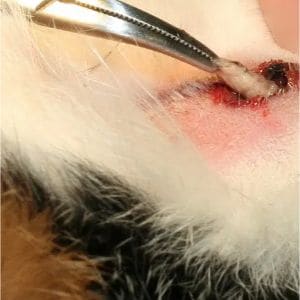
Your veterinarian should examine any newly discovered lumps. If a sebaceous cyst displays any of the following signs, it should be drained or removed:
- Bleeding
- Green or yellow crusts
- Redness
- Irritation
- Itching
How Cat Lumps, Bumps, and Cysts are Diagnosed
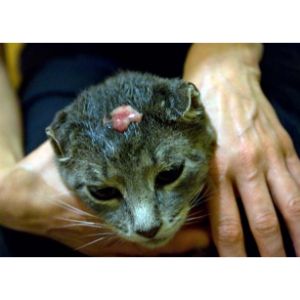
Your veterinarian will likely evaluate the mass based on its color, size, consistency, and movement (growing into the underlying tissue or only felt on the skin).
A fine-needle aspirate and cytology will frequently be carried out. A little needle is then used to remove a sample of cells from the mass, which are then submitted to a lab to be examined by a pathologist.
This test by itself can accurately diagnose certain masses. Due to the tumor cells’ strong attachment, tiny needle aspiration may be ineffective in treating other tumors, such as fibrosarcoma.
These lumps must undergo a surgical biopsy to be removed entirely, if possible, or at least in part for testing.
What are Cysts with Open Drainage?
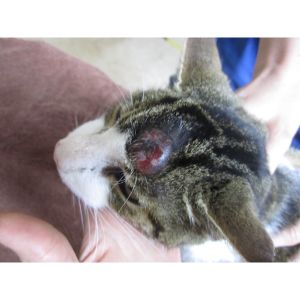
A tiny bulge under the skin is the first sign of a cyst in your cat. Cysts can develop due to an illness, a blocked duct, or an object that reacts with your cat’s body and triggers a reaction.
Your cat’s body develops a tissue sac with a lining that secretes the cyst’s substance.
Cysts include pus, fluid, semi-fluid/solid tissue, or dead cells. They are typically not harmful and don’t need to be treated.
Most cysts will disappear after being removed from the body or remain healthy and unaltered.
However, they need to be removed or drained if they result from an infection, get in the way of your cat’s mobility, or hurt or bother your cat because of where they are.
Suppose your vet decides to drain the cyst rather than physically remove it. In that case, the cyst may be drained by inserting a needle and emptying it, or if your doctor thinks it’s necessary, an open cyst drainage procedure may be carried out.
Open draining may be considered if an acute or chronic cyst does not respond to more conservative means of therapy.
For open cyst drainage, a surgical incision is made, and a small surgical rubber tube is then inserted into the site, sutured, and left there so that fluid can gradually drain over time.
Using this technique, the wound is given a chance to purge itself of any abnormal fluid and tissue, enabling your cat’s body to heal normally without abnormal tissues.
Your veterinarian can recommend the best course for treating a cyst that has developed into a problem.
Method for Open Cyst Drainage in Cats
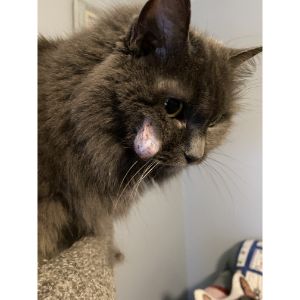
Your cat will typically need to be put under anesthesia to undergo the open draining of a cyst.
Your veterinarian will want to perform a medical check on your cat before administering anesthesia to ensure there are no underlying diseases, such as systemic infections or respiratory illnesses, that could make the anesthetic administration problematic.
To reduce the chance of vomiting and aspirating vomit while under anesthesia, you will also be advised to have your cat fast from food before the anesthetic is administered.
Before performing any operation, your veterinarian may decide to conduct a biopsy of the cyst tissue to check for the presence of malignant cells if there is any doubt about the cyst’s nature.
Your veterinarian will use general anesthesia to carry out an open cyst draining.
Shaving and antiseptic cleaning will be done on the area where the drain will be put. The cyst will be cut, and extra fluid will be allowed to flow from the site.
The cyst may need to be “pumped” of fluid and tissue, in which case a Penrose drain will be inserted into the incision and sutured to enable ongoing cyst drainage.
The drain may stay in place for a few days or weeks based on how drainage and healing proceed. Your veterinarian will have to remove the drain at a subsequent appointment.
Antibiotics will be administered if an infection is discovered. Anti-inflammatory drugs and painkillers will be prescribed as needed.
Frequently Asked Questions
How much does it cost for a vet to drain a cyst?
Depending on the vet, draining a cyst may cost between $150-400. However, sometimes your vet needs to be involved if there is an infection.
Can I use hydrogen peroxide on my cat?
Never use hydrogen peroxide on a cat, which will burn or damage its skin.
Can I use Neosporin on a cat?
Do not use Neosporin on a cat, since this will trigger an allergic reaction that could have life-threatening side effects.
So How To Drain A Cyst On Your Cat?

In conclusion, feline cysts are rarely major health issues or life-threatening.
Nonetheless, it is crucial to take your cat to the vet as soon as you discover a new lump so you can properly treat it, particularly if they are ill.
Your cat can live a healthy life with a cyst with the right care or surgically remove it for a more long-term fix.
If you find this guide, “How To Drain A Cyst On Your Cat,” informative and helpful, you can check out these other cat-related articles from our team:
- How to Get a Cat Out of Heat with a Q Tip?
- How To Put a Cat On a Diet?
- My Cat is in Heat and Won’t Shut Up – What Should I Do?
You can learn more about cat health care by watching “How to Treat a Sebaceous Cyst on a Cat” down below:




